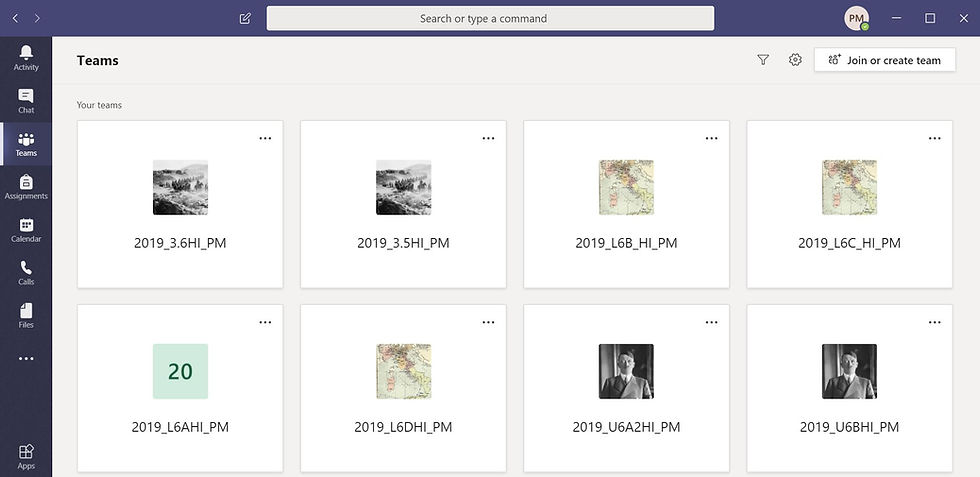A breakdown of...Cognitive Load Theory
- Teacher Breakdown

- May 8, 2019
- 4 min read
"The number of people talking about Cognitive Load Theory is almost as high as the number of people quoting that tweet from Dylan William about Cognitive Load Theory..."

"I've come to the conclusion Sweller's Cognitive Load Theory is the single most important thing for teachers to know" - Dylan William (via Twitter, 2017)
Is it though, Dylan? Really? Personally, I reckon there were more pressing things that I wish I had known as a new teacher, like: 'the mugs in the staff room are not communal', 'don't volunteer to go on that residential trip in October half term' and 'avoid that nightclub right by the school'...
But once the first few years of teaching are out of the way, perhaps DW is right, maybe Cognitive Load Theory (CLT) is an essential thing for all teachers to know. It has certainly had its moment in the limelight over the past couple of years, emerging as the brightest star of our pedagogical generation; it seems to have amassed a cult following, including the bigwigs down at Ofsted.
So what are the basics that all early-career teachers need to know? After all, the time we spend pouring over CLT research could be better spent drinking in hipster gin bars and ignoring conversations about Brexit (am I the only young person that does this?)
Right, imagine you have come to the end of your lesson and have produced a plenary quiz to check your students' understanding. You then collect in the scores five minutes later and you think to yourself: 'Wow! My students nailed this!' Then, one boy replies with his mark: 'six, Miss', which brings you crashing back down. You realise that you were wrong - the test was out of ten, your students know nothing. Later, you hear a knock at the door in the middle of the night. It's your headteacher. They've got their hands on the results from the quiz and have notified the cognitive-load authorities; your time as a teacher is over and you will spend the rest of your life overloading, up-market grocery baskets on the checkout of M&S rather than the minds of innocent children in your school...*
(*Incidentally, that whole paragraph was an example of cognitive overload. See what I did there?)
Cognitive Load Theory helps us to understand why students make mistakes in class. You might think that you have produced a great lesson; however, there is a limit on how many pieces of information the brain can process and remember at one time, so your pupils will be forced to pick and choose what gets retained. Plus, if we are wanting students to actually do something with that information, then these items need to be reduced even further.
Dominic Shibli and Rachel West summarised Cognitive Load into three different forms:
Intrinsic cognitive load
The inherent difficulty of the material itself, which can be influenced by prior knowledge of the topic (how difficult the work is for pupils)
Extraneous cognitive load
The load generated by the way the material is presented and which does not aid learning (is the PowerPoint slide overloaded? Are there unnecessary images?)
Germane cognitive load
The elements that aid information processing and contribute to the development of ‘schemas’ (This is positive cognitive load. Schemas are patterns/rules that students have developed to remember and manipulate information; this information is already embedded in the long-term memory)
So why are some teachers rewriting every worksheet, lesson plan and PowerPoint? Well, reducing cognitive load could lead to improvements in pupils' working memory; they could be able to recall information, follow instructions and remain on task much better. So no wonder the Twitter 'tweachers' (yuck) are raving about CLT - could it single-handedly improve pupil learning?
Ultimately, the evidence is still a little inconclusive and a lot is riding on clinical studies. Nevertheless, here are some practical solutions on how you could reduce your pupils' cognitive load going forward:
> Split up tasks, use skeleton planning grids and worked examples
Enabling a student to complete tasks one-by-one, rather than simultaneously, will help to reduce intrinsic cognitive load. Providing learning aids will help students to focus on the parts of the answer that are particularly difficult, reducing intrinsic load.
> Reduce the amount of 'additional fluff' on a PowerPoint or worksheet
Keeping information clear and concise will help students to focus on the most important elements; this will reduce extraneous load.
> Help students to develop schemas
If a student approaches a task with a whole toolkit of learned patterns/rules that they can easily access, then they will find a related task much easier. Learning times tables off-by-heart (regardless of any complaints from disgruntled primary school teachers ) is an example of germane load. Teachers could consider using retrieval practice to achieve this.
There are dozens of other ways that teachers can help students to remember and manipulate information; understanding the basics of cognitive load will help you to scrutinise every activity or resource that you create, so that you can adapt them accordingly. However, teachers should perhaps not become too trigger-happy with that 'delete' key, as reducing cognitive load too much can have a negative effect:

"[if cognitive load is reduced too much], the entire learning process would consist of too many small steps – and would thus become unduly fragmented and long" (Reif, 2010)
Alistair McConville has even gone one step further in a recent article for TES magazine, questioning the myth of Cognitive Load Theory altogether.
But what do you think?





Comments